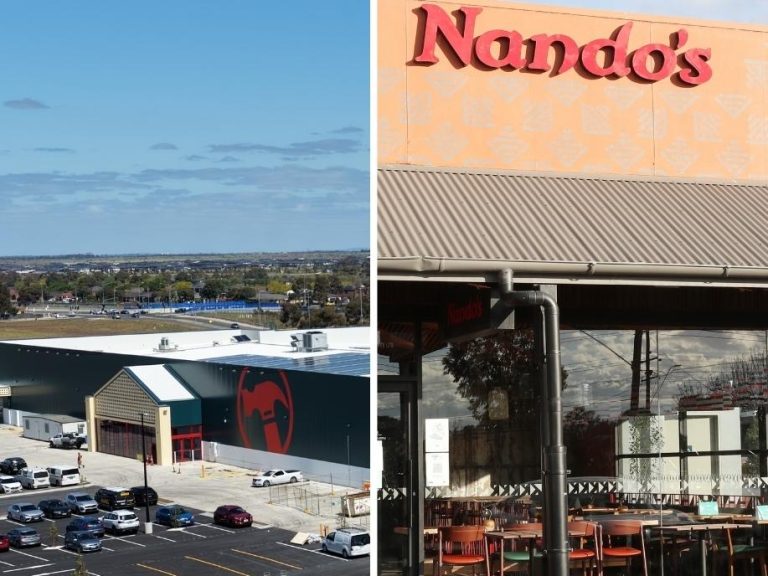Big rural investors chase sustainable returns as cropping shines
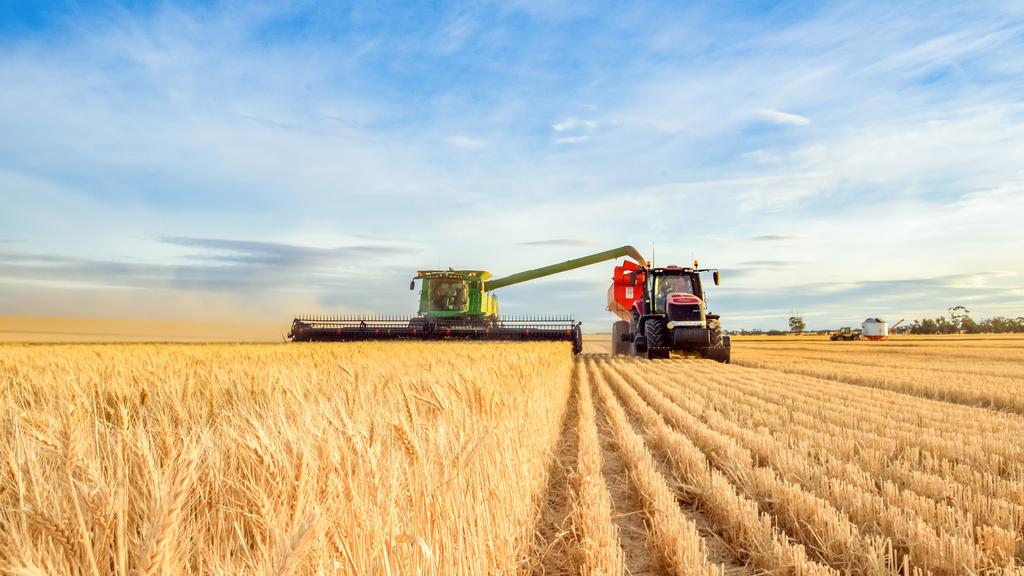
The top operators are seeking to expand their agricultural empires, but now they are putting sustainability at the fore.
Rural property is being billed as a safe haven amid the sharemarket rout and the broad based hit to the commercial property sector.
While the area faces a myriad of pressures, from rising costs and interest rates to volatility in commodities, a new breed of institutional managers is reshaping the industry.
The big players include the likes of Macquarie Asset Management and Warakirri Asset Management, and they are setting up products designed to combat the changing climate and meet demanding investment return hurdles.
The growing institutionalisation of Australian farming is also changing the nature of the sector, as big local and offshore players have increased their presence and are likely to grow fastest.
Larger players have been drawn to Australian farmland due to the tailwinds from the rising global population, greater food consumption, and the promise of higher commodity prices and capital gains long term.
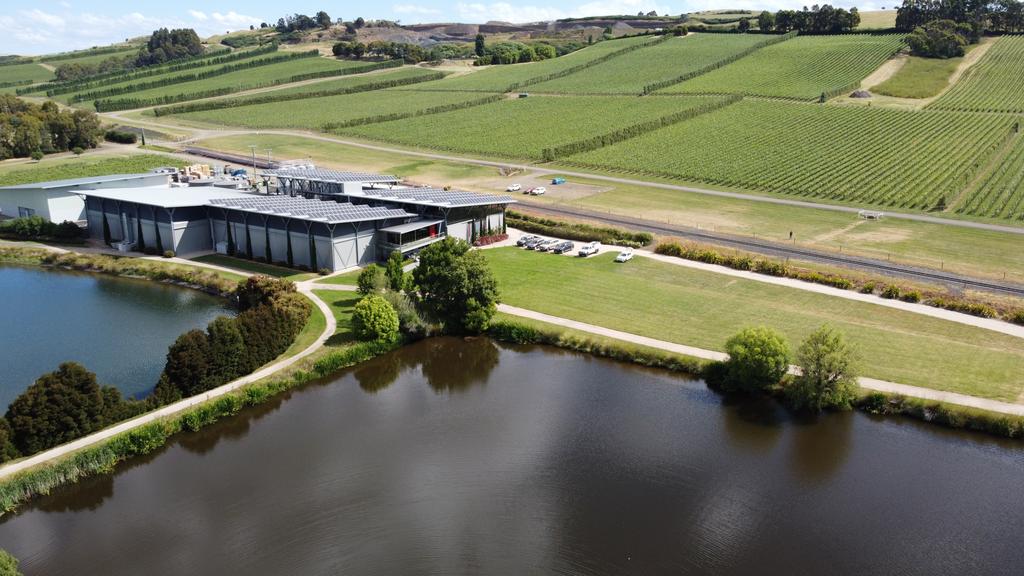
The top operators are seeking to expand their agricultural empires, but now they are putting sustainability at the fore.
Traditional smaller farmers and property owners have also ridden some of these trends, but large operators are best positioned to expand in a sustainable fashion.
This new breed of institutional managers is also taking on the carbon challenge, with Warakirri launching a sustainable cropping fund, which it hopes to build up to $1bn over coming years.
Listed players are also presenting investment opportunities as they look to expand their operations. But the backdrop to agricultural investment is never simple.
Farmland prices across the nation are flattening and the number of sales are at the lowest levels in a generation.
Rural Bank’s mid-year Australian Farmland Values Report found that the median price of Australian farmland in the first half of 2023 bumped up by just 0.1 per cent from a year earlier.
At the same time, transaction volumes declined to the lowest levels in almost three decades as El Nino bit and drought spread to parts of the country, the bank said.
But the value of cropping land has outpaced grazing country land values, with median values increasing in South Australia, Western Australia and NSW.
And that’s where big operators like Warakirri see an opportunity. The private group is looking to grow its $2.5bn empire with the launch of a sustainable cropping strategy, alongside its institutional partners.
Warakirri managing director Jim McKay said the funds house, which has a near three-decade record, is seeing strong demand for Australian agriculture from domestic and global institutional investors.
The company has a mix of pension fund and individual clients, with backers including superannuation fund REST, and operations across most rural sectors, including dairies, where it is the largest milk producer in the country.
Warakirri already has a diversified agriculture strategy, with two funds: one directed at institutions and the other for wealthy investors.
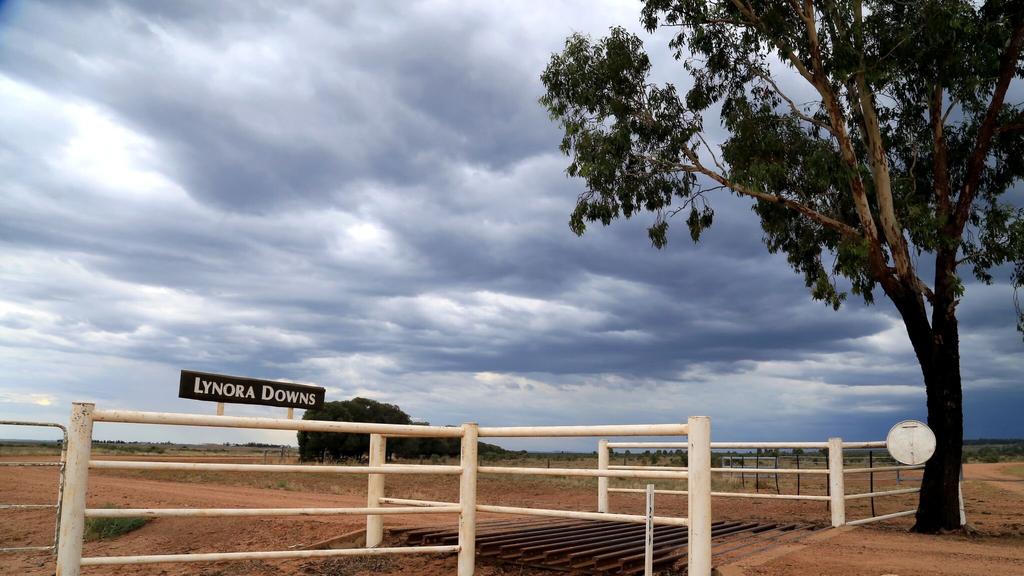
Rural Funds boss David Bryant said the cotton farm, when developed, had the opportunity to improve productivity drive and long-term income as well and asset value growth.
Its latest strategy will combine an environmental strategy with hard-headed investing.
Mr McKay said a well-diversified broad acre cropping portfolio has about half the volatility of equities, with the benefits coming from investing across a number of properties in different commodities.
“This is partly why agriculture is commercialising into the bigger and better, more scalable operators,” he said.
The number of farm businesses in Australia has halved over the last two decades, partly as the industry has professionalised.
And the big players are getting bigger, with the top 10 per cent of operators producing about half the output.
The industry also has big tailwinds, with the demand side being driven by the rising Asian middle class and environmental constraints seeing the world hit peak farmland globally.
Mr McKay said the key to meeting demand will be boosting productivity, but this should be in a carbon-neutral or carbon positive fashion.
This can come via better water use and carbon offset programs, as well as even more sophisticated means, including using a combination of data, technology and robots.
The agribusiness veteran predicts that more capital will be poured into the areas to help drive the efficiencies, which in turn lift productivity. “We’re really excited to see more pension funds getting involved because pension capital is actually perfect capital,” Mr McKay said.
Local superannuation funds are keen but also face hurdles, ranging from asset allocation and performance benchmarks when investing in farming, to a general lack of expertise in the area. “I’m hopeful over time that we’ll see some more Australian pension funds also here,” he said, noting that Canadian groups had built up large holdings.
The sustainable cropping fund could be a game changer as it sets a pathway which the firm said is a realistic way to get to net zero.
“The first pathway is to get to carbon-neutral, and that’s pretty clear … we’ve got a clear pathway,” he said.
“Part of it is based on operational efficiency, and there’s some technology improvements that will help some of that.”
Warakirri is moving fast. It has 11 different seed assets under consideration, totalling $1.4bn across four states, with assets at various stages of due diligence, including two option agreements.
“The number is less relevant than the drivers,” Mr McKay said of the $1bn target. But the firm won’t proceed unless it can build an initial $300m portfolio.
“It will really be dependent on what the opportunities are for us and the drivers to ensure that you’re getting that kind of low volatility of returns,” he said.
The strategy is targeting competitive risk adjusted returns greater than 10 per cent per annum, and the firm is chasing assets it can transform.
At roughly $1bn, Warakirri estimated the portfolio would include up to 10 aggregations totalling 150,000ha and producing roughly 400,000 tonnes of grain and cotton per annum.
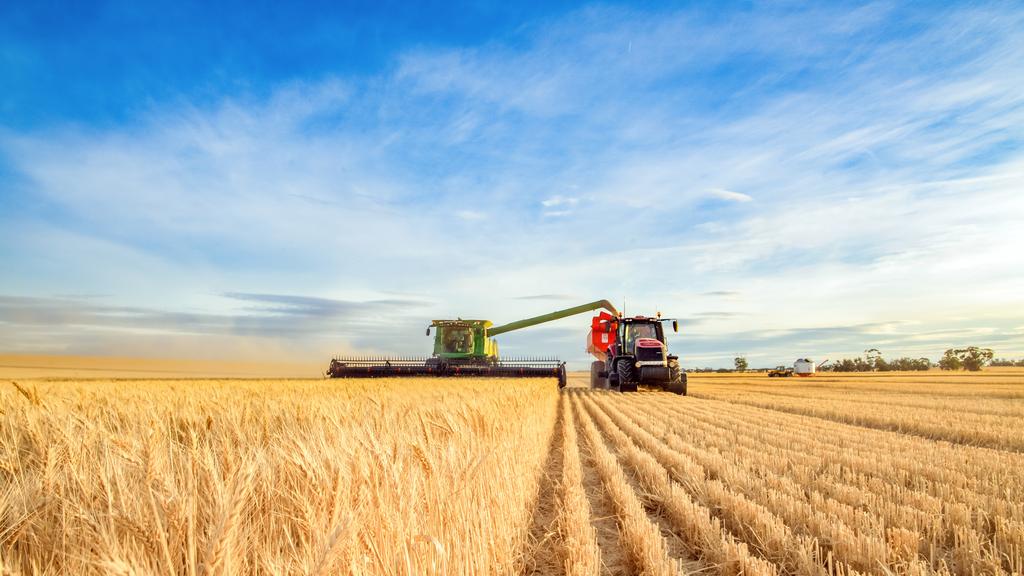
Harvesting machine approaching with the foreground of golden wheat.
Other institutions are also making headway. The listed Rural Funds Group runs a diversified portfolio across Australia and is also landlord to top operators. Since it was listed almost a decade ago, it has grown to a $1.8bn portfolio.
The trust owns a diversified portfolio of Australian agricultural assets, mainly on long-term triple net leases to top operators like Olam and Brazil’s JBS. Its assets include macadamia orchards, almond orchards, cattle properties, cropping properties and vineyards.
Two additional cattle properties were acquired in the last financial year and the group had flagged that during the early development phase of assets, some will be operated prior to leasing. The company is working on several transactions, primarily focused on unleased assets.
Bell Potter analyst Jonathan Snape sees an opportunity in the listed stock. He wrote that Rural Funds Group’s share price has continued to remain subdued and was trading at its largest discount since listing.
He said agricultural land values remain at elevated levels despite softer commodity price trends and concerns about El Nino.
“This current discount to net asset value implies a downward correction in asset values greater than that seen in US land values in the Great Depression and in our view is excessive given the continued resilience of values in a rising interest rate and falling commodity price environment,” he wrote.
While finding the catalyst to cause the net asset value discount to close is often difficult, he said the risk reward balance for Rural Funds was more biased to reward.
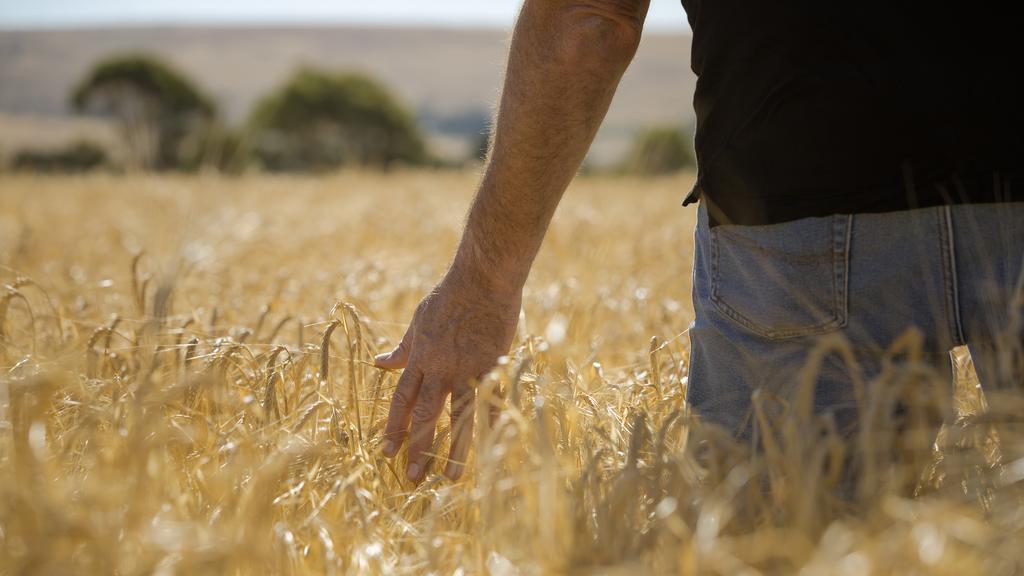
An Australian farmer in a cropping field.
For the best farm enterprises, the reward will come in pursing sustainable strategies that win over big investors.
The sustainable cropping fund could be a game changer as it sets a pathway which the firm said is a realistic way to get to net zero.

